Going for a spin
by Jason Crawford · April 16, 2018 · 2 min read
Last weekend, in the spirit of learning with my hands, I took a three-hour intro spinning class—as in spinning yarn, from wool. We did it in the most primitive way, with a spindle.
We started with combed wool. Combing is a process that straightens out tangled fibers and removes shorter fibers so you get a nice, smooth bundle. This long, thin bundle, ready for spinning, is called a roving:
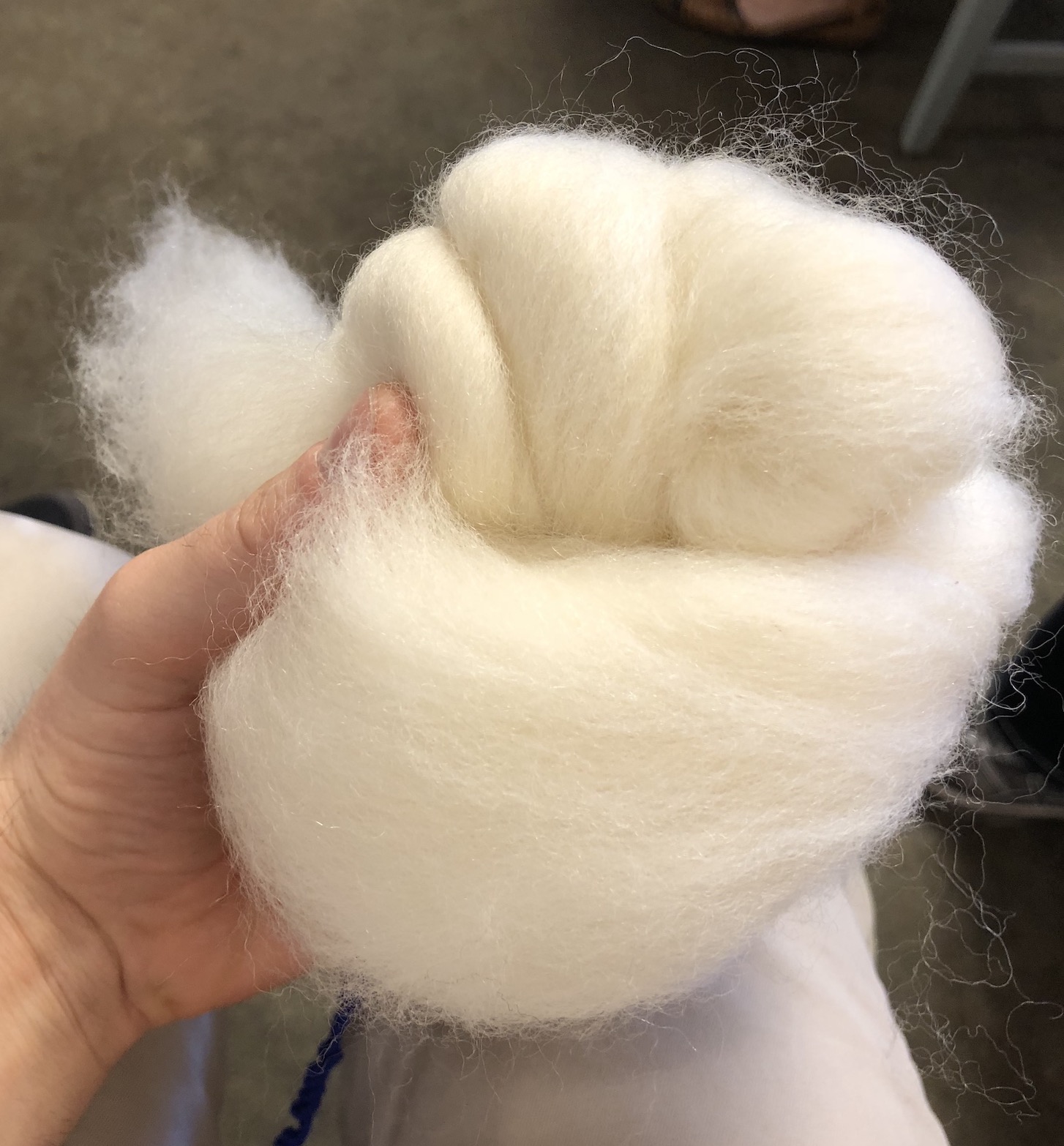
We used a top-whorl drop spindle. The “whorl” is the round weight that gives the spindle momentum as it spins; a “top-whorl” spindle is just one that has the whorl at the top of the shaft. I’m not quite sure what a “drop” spindle is as opposed to other kinds; maybe that has to do with the hook on top, which lets you dangle the spindle from the thread itself.
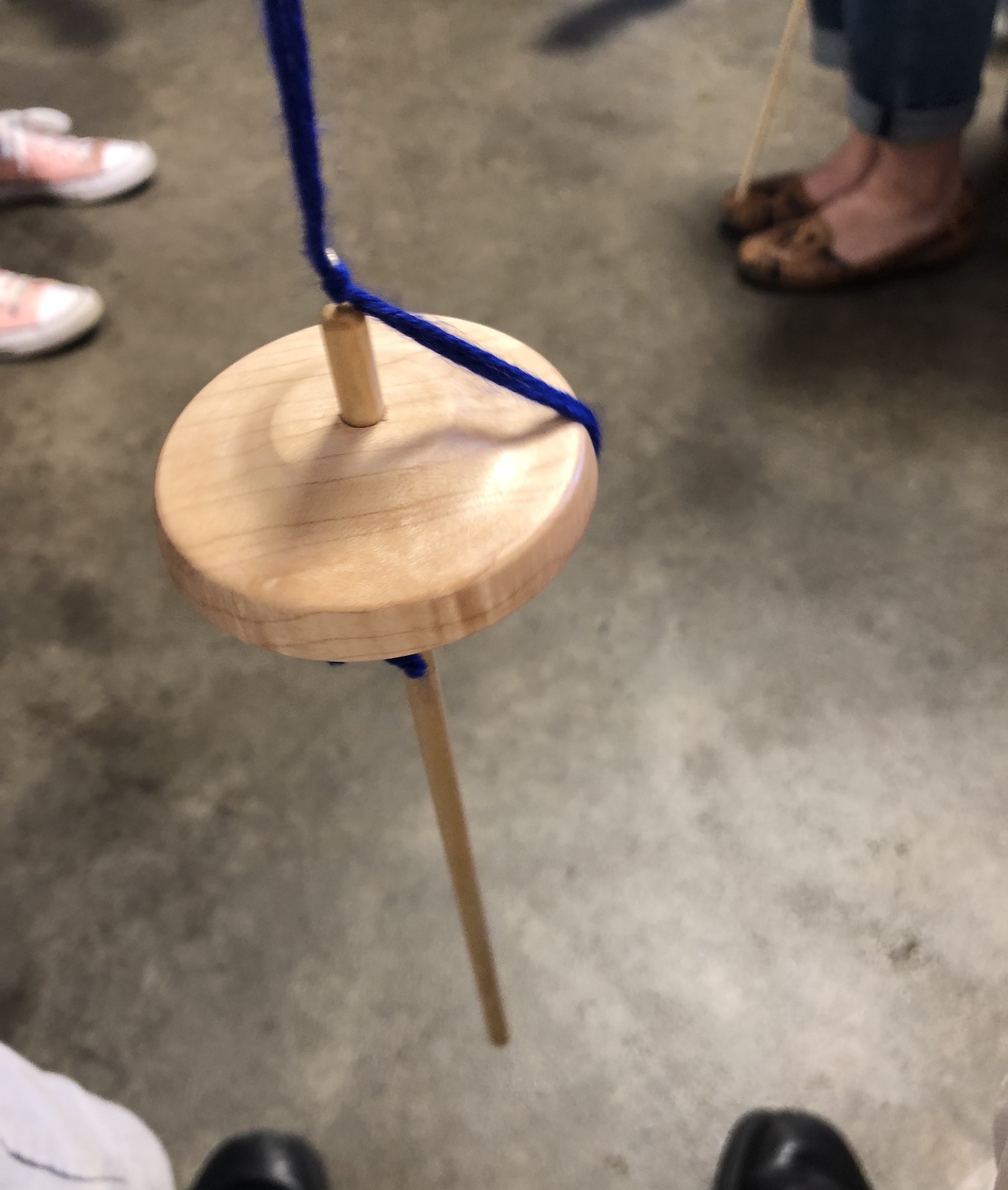
The trick with spinning is that to get a nice, fine thread, you need to only spin a small amount of fiber at once. The roving is far too thick to be spun as is. We took a piece of it, a foot or two long, pulled it apart lengthwise into two bundles, then pulled each of them apart. Then we stretched each piece out even further: by grabbing the roving at two points more than a fiber’s length apart, and pulling gently, you can stretch the bundle without breaking it; this is called drafting. The result was a bundle about eight times thinner than the original roving:
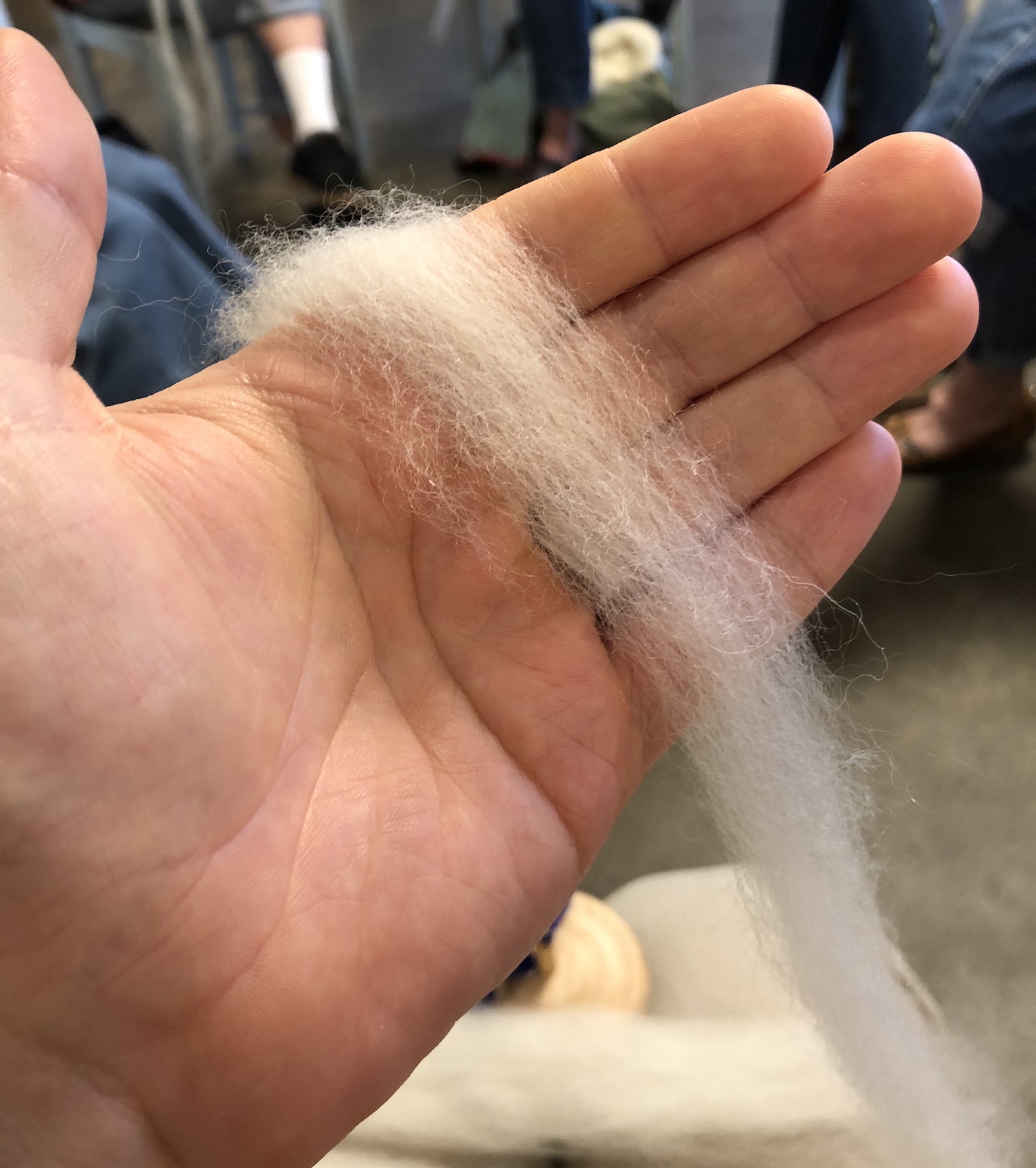
You start by hooking that onto the leader string (or in some methods, right on the hook at the top), and spinning the thing. We were taught to spin it against our thigh to get it going. You build up a lot of twist in the string, then you let that climb up the roving, twisting it into yarn.
It’s a simple process, but easy to mess up. Almost immediately, my roving came apart:
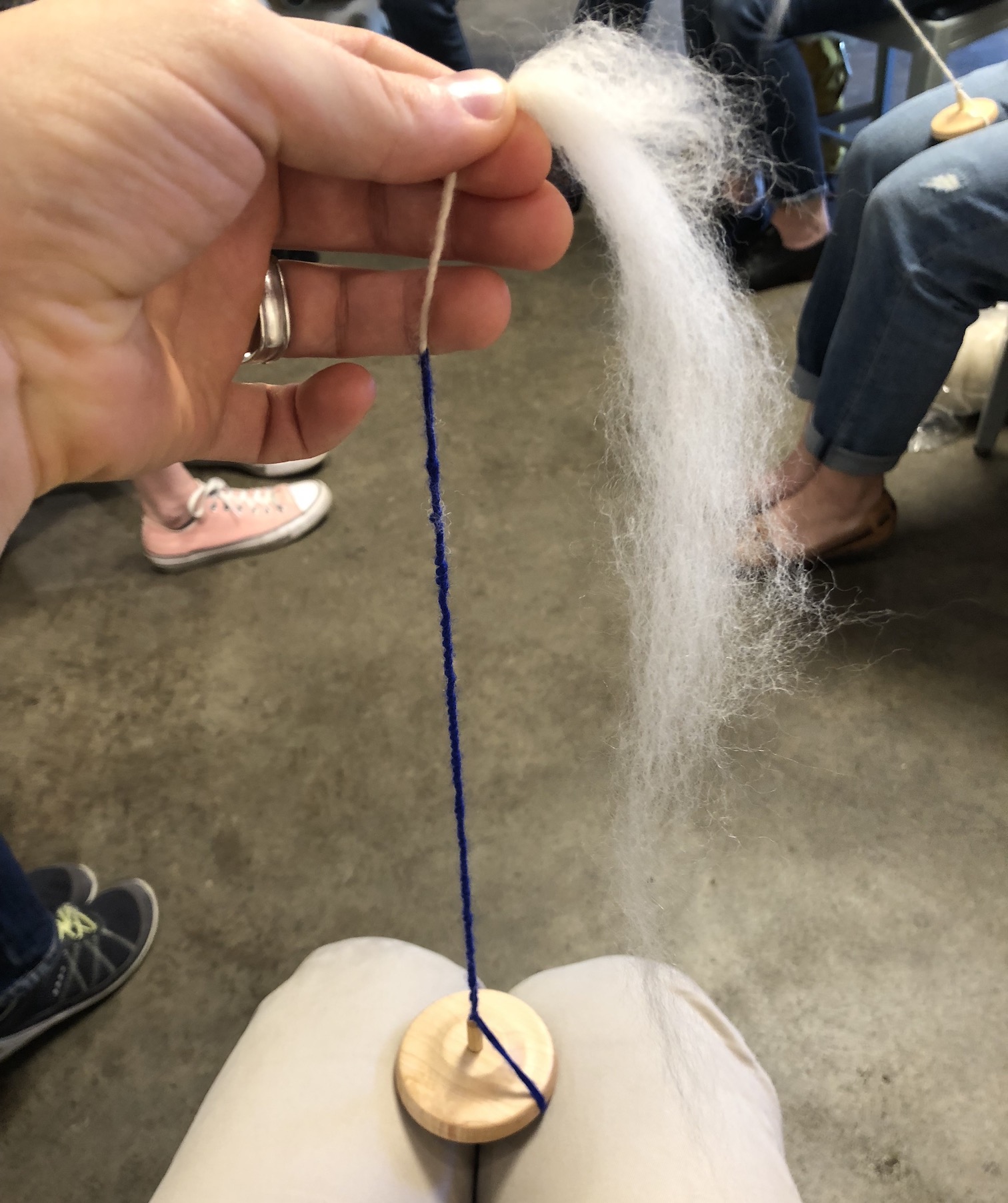
Fortunately, connecting two pieces of roving is just a thing you have to do all the time anyway, so I got back on track.
I also found it difficult to keep the roving out of the way. You sort of have to drape it on your hand or arm. I kept getting distracted by the spinning itself and letting the roving fall straight down. More than once, it got tangled in the yarn:
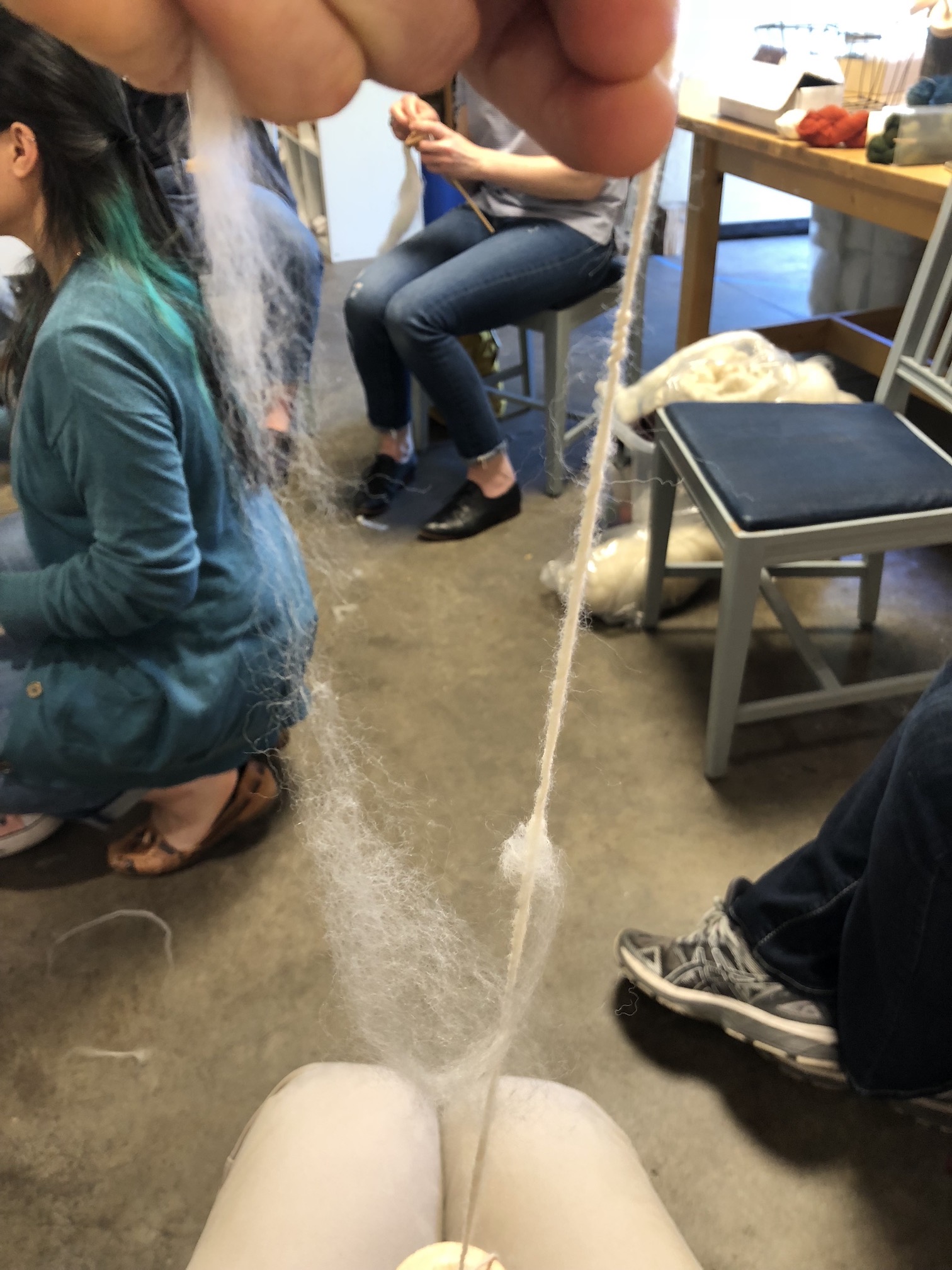
“A lot of spinning,” our instructor said, “is fiber management.”
After a couple of hours, I had… barely gotten through a foot of roving. I had a decent amount of yarn, but it was really just a start:
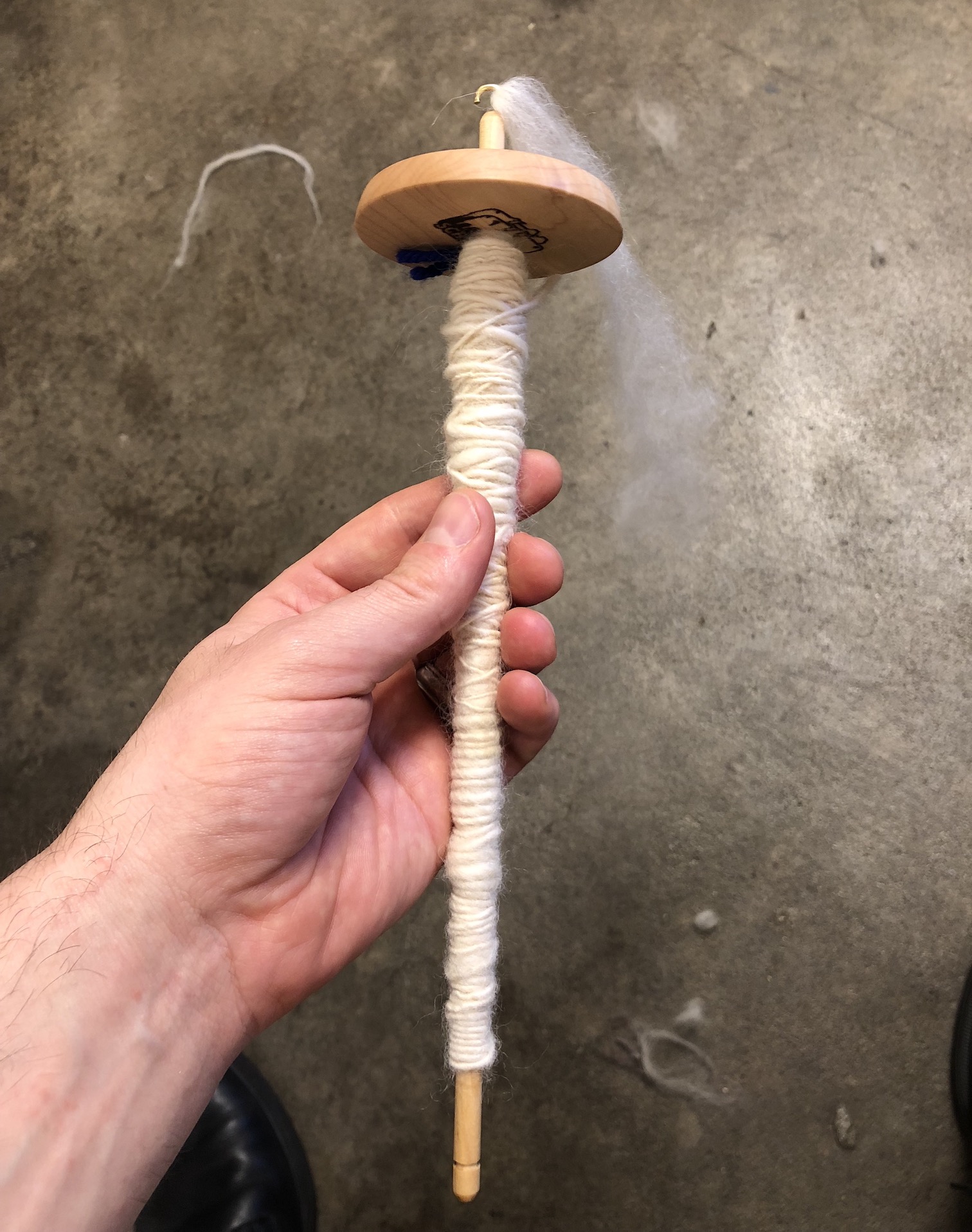
Making some yarn is not hard; doing it quickly and efficiently is. And my yarn was of poor quality and consistency. I was trying to make it reasonably thin, like thread, but it was easy to let too much fiber slip through at once, creating a big fuzzy lump in the yarn. You can see in this closeup how inconsistent my yarn was, with some parts much thicker than others:
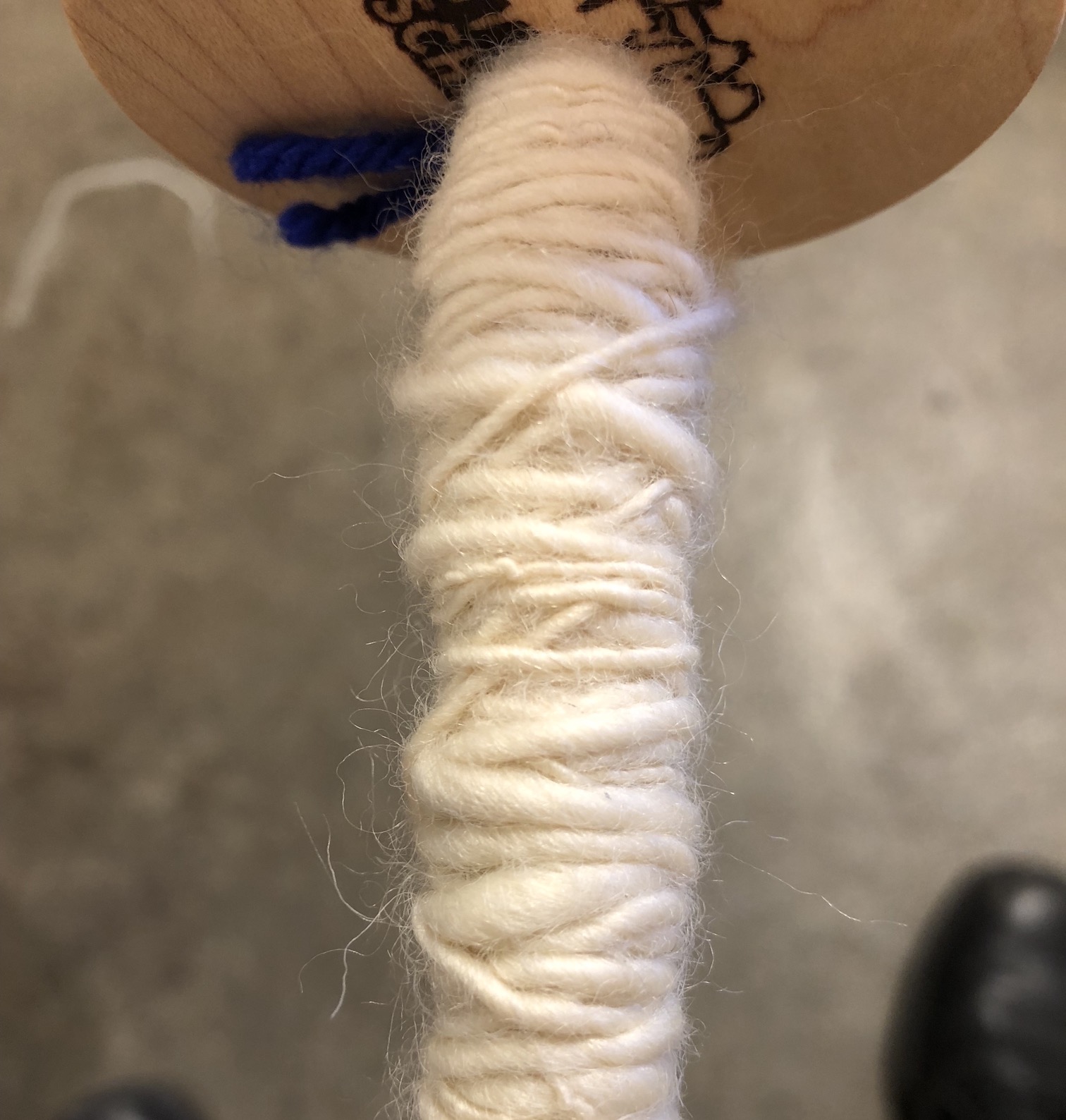
It was a fun diversion for a crafty afternoon. But it also drove home how slow and labor-intensive a process it is, and how much skill is needed to produce quality output.
